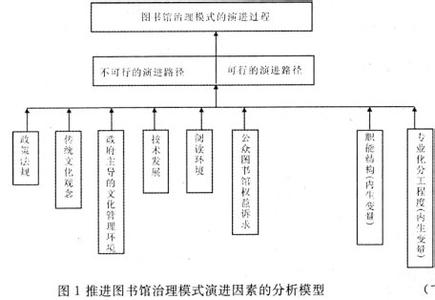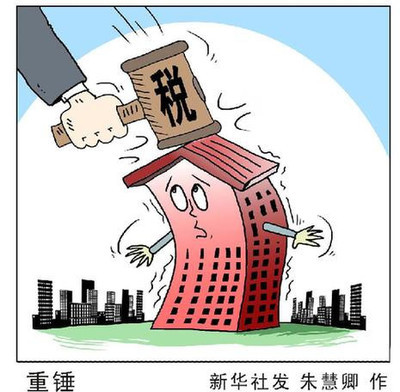表3中,控制变量SIZE和LEV的回归系数都较显著,表明规模越大对隧道效应抑制效果越明显,而负债越高则越能激发家族掏空上市公司,甚至引发银行等金融机构的套牢效应。众所周知,德隆就是向银行大量贷款,通过高负债高成长的模式迅速扩张,家族股东掏空上市公司就相当于向银行挖掘隧道,当德隆大厦崩塌之际,引发一系列的连锁反应。
五、结论
本文利用2002~2004年的280家民营上市公司样本检验了公司内部治理机制对家族控股股东隧道行为的影响。研究发现:第一,股权制衡度对家族掏空上市公司没有明显的抑制效果,CFB家族控股股东持股比例与隧道行为之间呈倒U型关系,即CFB公司的控股股东持股比例对家族掏空上市公司在一定程度上有正向影响,如果控股比例较高反而呈负向影响。而EFB公司没有这种关系。第二,CFB中金字塔层级对资金占用的正向影响表明资本家通过构建多层控制链实施隧道行为,EFB中企业家家族没有这种倾向。第三,家族信任在EFB样本中对隧道行为有显著的正向影响,表明企业家家族成员在上市公司任职有利于形成合谋挖掘隧道转移资源。第四,控股股东以企业集团方式存在的公司遭受了更加严重的掏空,支持了企业集团的“掏空假说”。第五,家族类上市公司中独立董事没有发挥有效的监督作用;第六,职业经理人持股比例存在“监管激励效应”及“合谋掏空效应”,总经理持股比例与隧道行为强度呈现U型关系,随着总经理持股比例的增加,隧道行为强度先下降后上升。
以上研究结果表明:越是资本家控制型的公司,大股东通过隧道行为剥削中小股东的可能性就越大。所以在健全和完善证券监管机制时,不妨实施公司分类分级监管,对这些资本家家族控制的公司进行特别监管,把有限的监管资源集中到关联交易倾向大和掏空动机强的公司,可以起到防范于未然的作用。
参考文献
高雷、何少华、黄志忠, 2006:《公司治理与掏空》,《经济学(季刊)》第5卷第3期。
李增泉、孙铮、王志伟,2004:《“掏空” 与所有权安排——来自我国上市公司大股东资金占用的经验证据》,《会计研究》第12期。
刘峰、贺建刚,2003:《股权结构与大股东利益实现方式的选择—中国资本市场利益输送的初步研究》,载于《第二届实证会计研究论文集》,。
罗党论、唐清泉,2006:《独立董事制度实施效果分析——基于上市公司关联交易的证据》,《南方经济》第9期。
申明浩,2007:《合谋理论对隧道行为的解释与应用》,《经济学动态》第9期。
唐清泉、罗党论、张学勤,2005:《独立董事职业背景与公司业绩关系的实证研究》,《当代经济管理》第1期。
于东智,2003:《董事会、公司治理与绩效——对中国上市公司的经验分析》,《中国社会科学》第3期。
Atanasov, Vladimir, 2005, “How Much Value Can Blockholders Tunnel? Evidence from the Bulgarian Mass Privatization Auctions”, Journal of Financiial Economics 76(1), 191-234.
Bae, Kee-Hong., Jun-Koo Kang and Jin-Mo Kim, 2002, “Tunneling or Value Addition? Evidence from Mergers by Korean Business Groups”, Journal of Finance 57(6), 2695-2740.
Baek, Jae-Seung, Jun-Koo Kang and Kyung Suh Park, 2004, “Corporate Governance and Firm Value: Evidence from the Korean Financial Crisis”, Journal of Financial Economics 71(2), 265-313.
Barclay, Michael and Clifford Holderness, 1989, “Private Benefits from Control of Public Corporation”, Journal of Financial Economics 25(2), 371-395.
Bennsdsen, M., and D. Wolfenzon, 2000,“The Balance of Power in Closely Held Corporations”, Journal of Financial Economics 58, 113-139.
Bertrand, Marianne, 2002, “Paras Mehta and Sendhil Mullainathan, Ferreting out Tunneling: An Application to Indian Business Groups”, Quarterly Journal of Economics 117(1), 121-148.
Chang, Sea Jin, 2003, “Ownership Structure, Expropriation, and Performance of Group -affiliated Companies in Korea”, Academy of Management Journal 46(2), 238-253.
Dyck, Alexander and Luigi Zingales, 2004, “Private Benefits of Control: an International Comparison”, Journal of Finance 59(2), 537-600.
Hermalin, B. and M. Weisbach. 1991, “The Effects of Board Compensation and Direct Incentives on Firm Performance”. Financial Management 20, 101-112.
Hermalin, B., and M. Weisbach, 1991, “The Effects of Board Composition and Direct Incentives on Firm Performance”, Financial Management 20, 101-112.
Himmelberg, C. P., R. G. Hubbard, and D. Palia. 1999, “Understanding the determinants of managerial ownership and the link between ownership and performance”, Journal of Financial Economics 53, 353-384.
Himmelberg, Charles and R. Glenn Hubbard, 2000, “Incentive Pay and the Market for CEOs: An Analysis of Pay-For-Performance Sensitivity”, Working paper, ColumbiaUniversity,.
Hubbard, R.G., and D. Palia, 1995, “Executive Pay and Performance: Evidence from the U.S.Banking Industry”, Journal of Financial Economics 39, 105-130.
Jensen, M.C and W H Meckling, 1976, “Theory of the Firm: Managerial Behavior, Agency Costs and Ownership Structure”, Journal of Financial Economics 3(4), 305-360.
Johnson, Simon, Peter Boone, Alasdair, Breach, and Eric Fiedman, 2000, “Corporate Gover- nance in the Asian Financial Crisis, 1997-1998”, Journal of Financial Economics 58:1-2,141-186.
Khanna, Tarun and Krishna Palepu, 2000, “Is Group Affiliation Profitable in Emerging Markets: An Analysis of Diversified Indian Business Group”, Journal of Finance 55(2), 867-891.
Khanna, Tarun and Krishna Palepu, 1997, “Why Focused Strategies may be Wrong for Emerging Markets”, Harvard Business Review 75(4), 41-51.
La Porta, R., F. Lopez-de-Silanes, A. Shleifer & R. W. Vishny, 2000a, “Agency Problem and Dividend Policies around the World”, Journal of Finance 55: 1-33.
La Porta, R., F. Lopez-de-Silanes, A. Shleifer & R. W. Vishny, 2000b, “Investor Protection and Corporate Governance”, Journal of Finance Economics 58: 3-27.
La Porta, R., F. Lopez-de-Silanes, A. Shleifer & R. W. Vishny, 1999a, “Corporate Ownership around the World”, Journal of Finance 54(2), 471-517.
La Porta, R., F. Lopez-de-Silanes, A. Shleifer & R. W. Vishny, 1999b, “The Quality of Government, Journal of Law”, Economics and Organization 15(1), 222-279.
La Porta, R., F. Lopez-de-Silanes, A. Shleifer & R. W. Vishny, 2002, “Investor Protection and Corporate Valuation”, Journal of Finance 57: 1147-1170.
Maury, Benjamin and Anete Pajuste, 2005, “Multiple Large Shareholders and Firm Value”, Journal of Banking and Finance 29(7), 1813-1834.
McConnell, J.J and Henri Servaes, 1990, “Additional Evidence on Equity Ownership and Corporate Value”, Journal of Financial Economics 27(2), 595-613.
Mehran and Hamid, 1995, “Executive compensation structure, ownership, and firm performance”, Journal of Financial Economics 38, 163-184.
Mitton and Todd, 2002, “A Cross-firm Analysis of the Impact of Corporate Governance on the East Asian Financial Crisis”, Journal of Financial Economics 64(2), 215-241.
Morck, R, A. Shleifer and R. W. Vishny, 1988, “Management Ownership and Market Valuation: an Empirical Analysis”, Journal of Financial Economics 20(1/2), 293-315.
Morck, Randall, David Stangeland, and Bernard Yeung, 2000, “Inherited Wealth, Corporate Control and Economic Growth: The Canadian Disease, in Randall. K. Morck, ed. : Concentrated Corporate Ownership”, University of Chicago Press, Chicago, 3.
Shleifer A, and Vishny R. W., 1997, “A Survey of Corporate Governance”, Journal of Finance 7,737-783.
Analysis on the Influence of Governance Structure to Family-controlled Tunneling Behavior of Chinese Private Listed Companies
Shen Minghao
(GuangzhouUniversity of Foreign Studies)
Abstract: In the paper, we choose the whole body of 280 private listed companies by the end of 2004 as research subjects and distinguish Capitalists-controlled (CFB) from Entrepreneurs -controlled (EFB).The results of regression analysis on family occupying of listed companies‘ capital show: capitalist-families incline to conduct tunnel behavior by the means of establishing multi-layer control chain; members of the entrepreneur-families working in listed company is conducive to the formation of collusion, digging tunnel and transferring resources; companies whose controlling shareholders exist in the form of enterprise groups suffer from being emptied more seriously; in family-controlled listed companies, independent directors have not played an effective supervisory role; the equity ratio of general manager and intensity of the tunneling behavior show U-shaped relationship, “the incentive effects of regulation” and “collusion draining effect” existing. We find the more the business is controlled by capitalist, the more possible tunnel behavior is to be cnducted. So we think the listed companies should be classed and supervised separately
Key word:tunneling behavior; affiliated transactions; governance structure; family-controlled; manipulative shareholder
JEL Classification: D230, G320,G390
*申明浩,广东外语外贸大学国际经济贸易研究中心、国际经济贸易学院;邮政编码:510420;电子信箱:[email protected]。作者感谢匿名审稿人的建设性意见,但文责自负。
[1] 这里将第一大股东的终极控制者所控制的其他公司与上市公司之间的资金占用也视为控股股东对上市公司的资金占用。
[2] 该标准主要借鉴了孔鹏(2005)家族上市公司“企业家”和“资本家”的标准,以及王明琳和周春生(2006)“创业型家族”和“非创业型家族”标准。
[3] 董事会决策的科学性和独立性能说明控股家族的控制程度。董事长和总经理的两职设置情况及独立董事比例是董事会结构的最重要方面,限于本文所用数据库中两职设置情况未能详尽收集,且此信息不是本文的主要内容,故本文仅将独立董事比例加入分析模型中。
[4] 选择三维度的分析变量基于以下两点:129;能够直接或间接反映各维度的重要特征;8218;上市公司年报数据中有披露或者易获取。
[5] 家族主义程度中最有代表性的因素就是利他主义,本文没有采用王明琳(2006)的方法——用家族成员进入董事会的数量来衡量利他主义程度,因为家族上市公司年报中并不会主动披露家族董事成员特征,在获取这一信息时难免有所遗漏,TOP1 虽然是间接衡量的方法,但数据易获取且相对可靠。
[6] 信任程度不好直接测量,本文主要研究家族与关联方合谋掏空的隧道行为,那么关联方的信任就是一个合谋成立的基础,交易集中发生的关联方自然体现出家族的信任格局导向,如果关联交易集中发生在家族控制股东身上,那么家族企业中主要体现为特殊的家族主义信任关系格局。

[7] 这个结论即SHR_CEO与NOC_TUNL之间的关系存在监管激励效应与合谋掏空效应,和SHR_CEO与TQ之间的利益趋同效应和壕沟防守效应相呼应。
注:《经济研究》2008年第6期
 爱华网
爱华网



